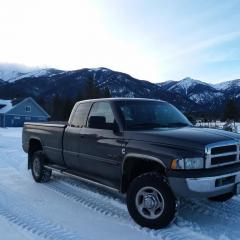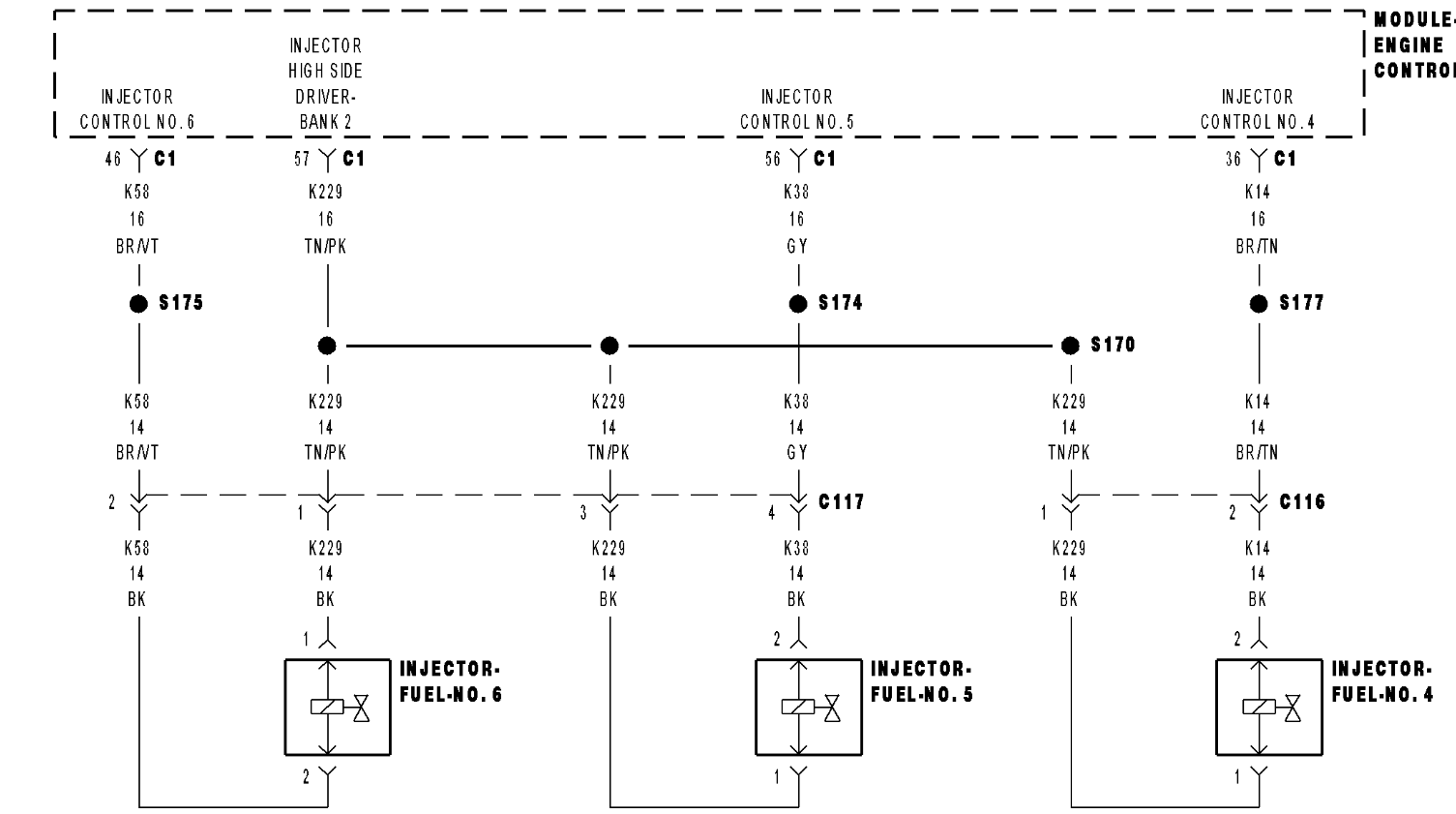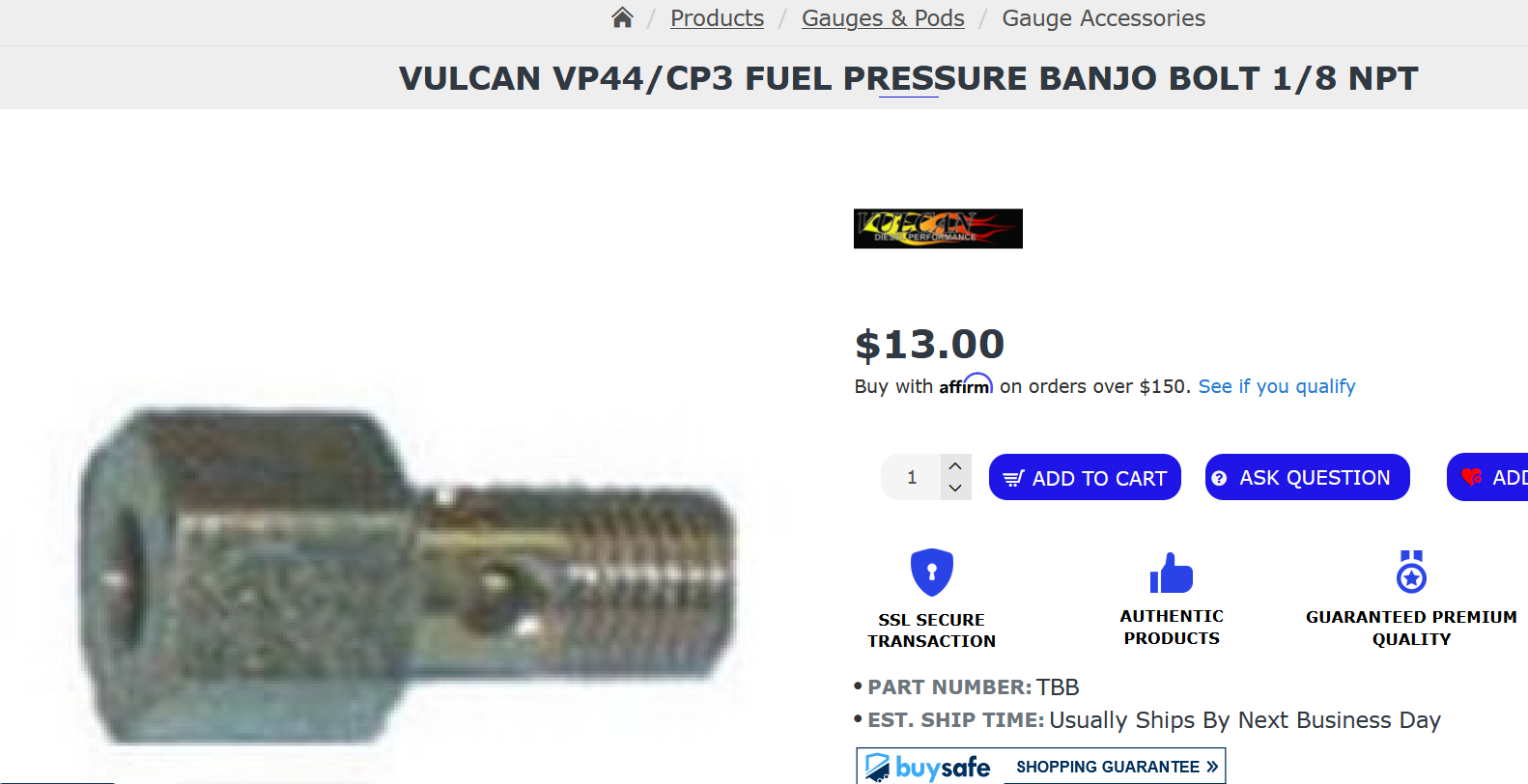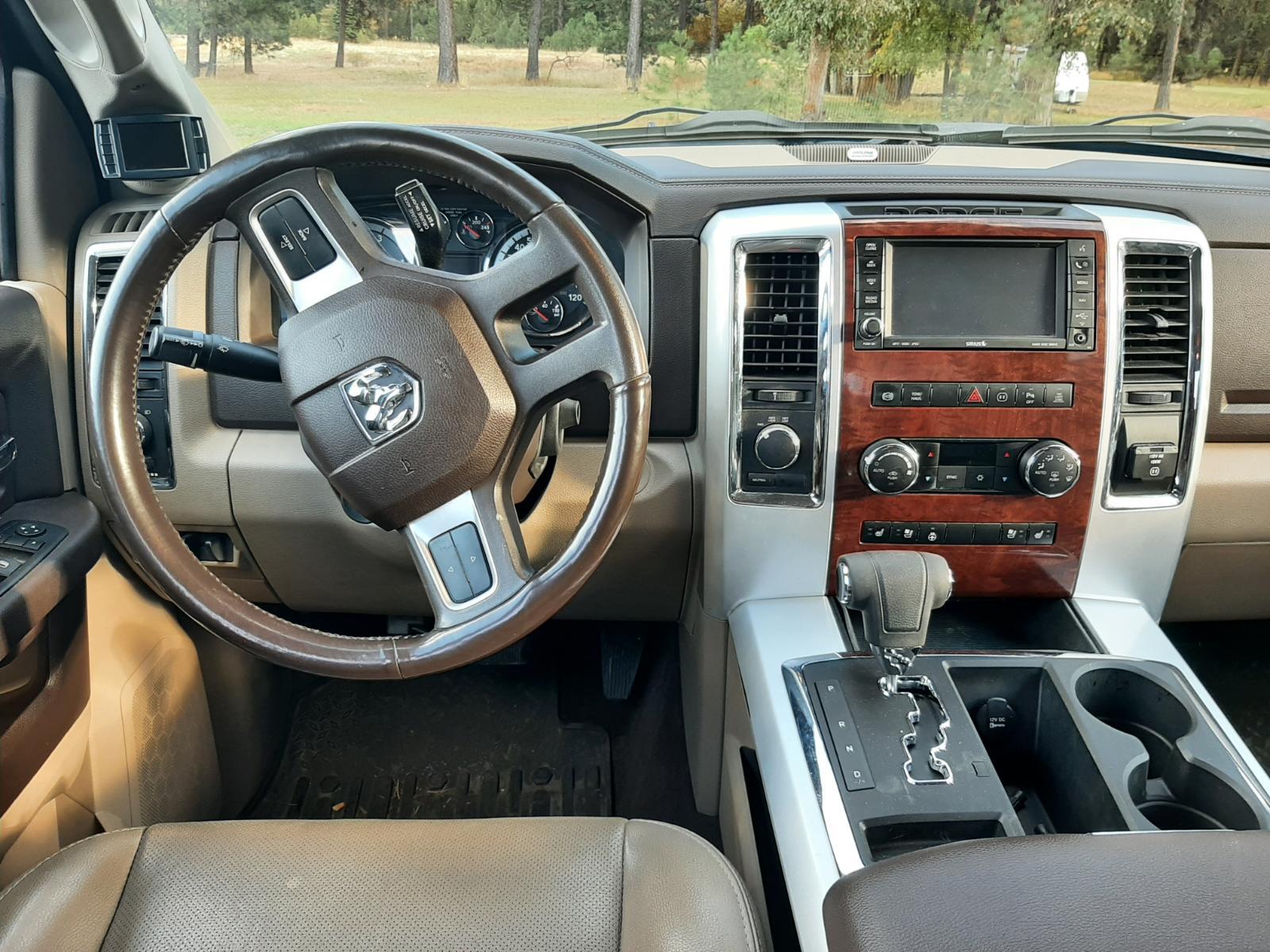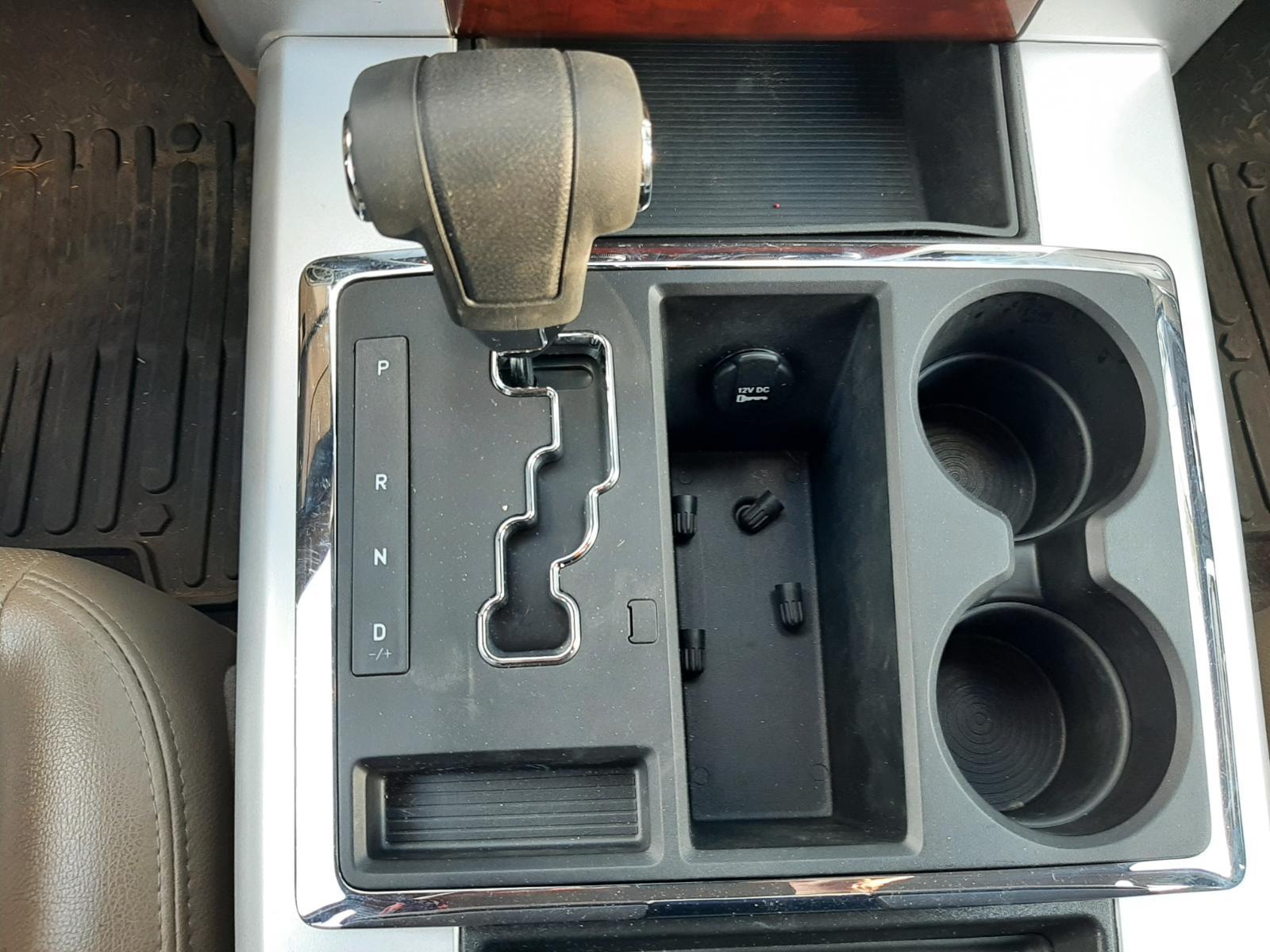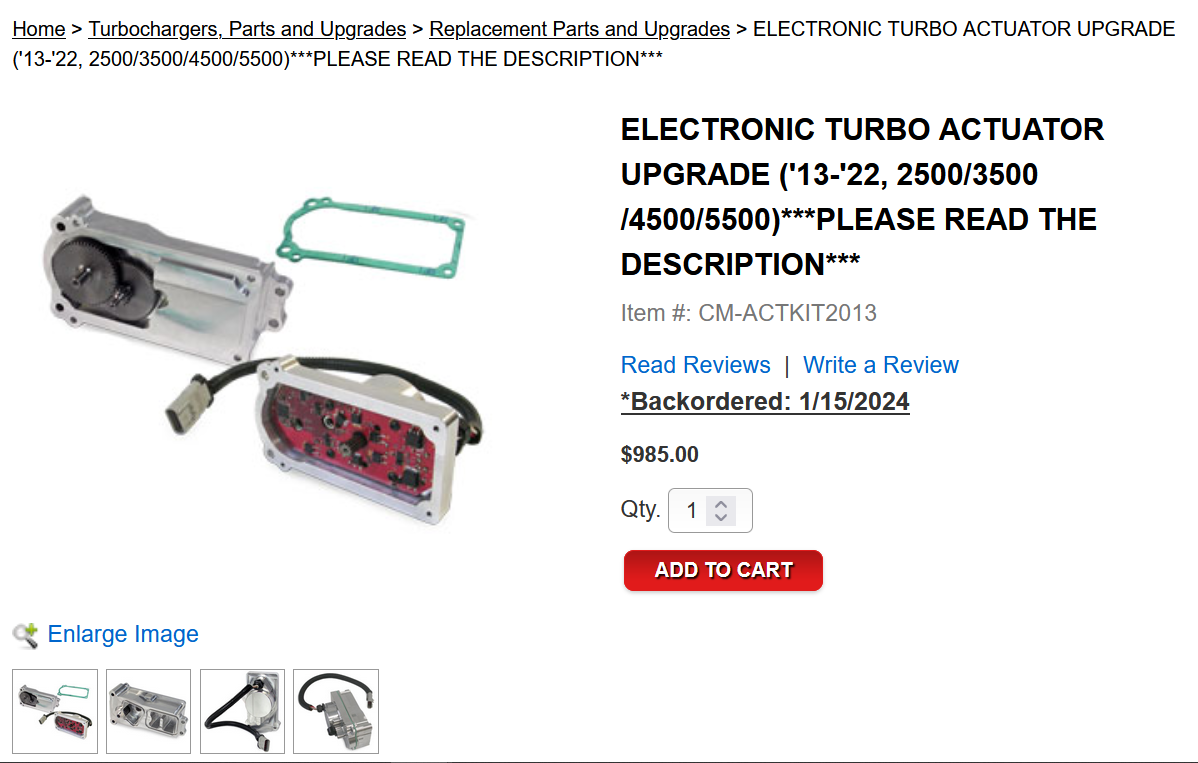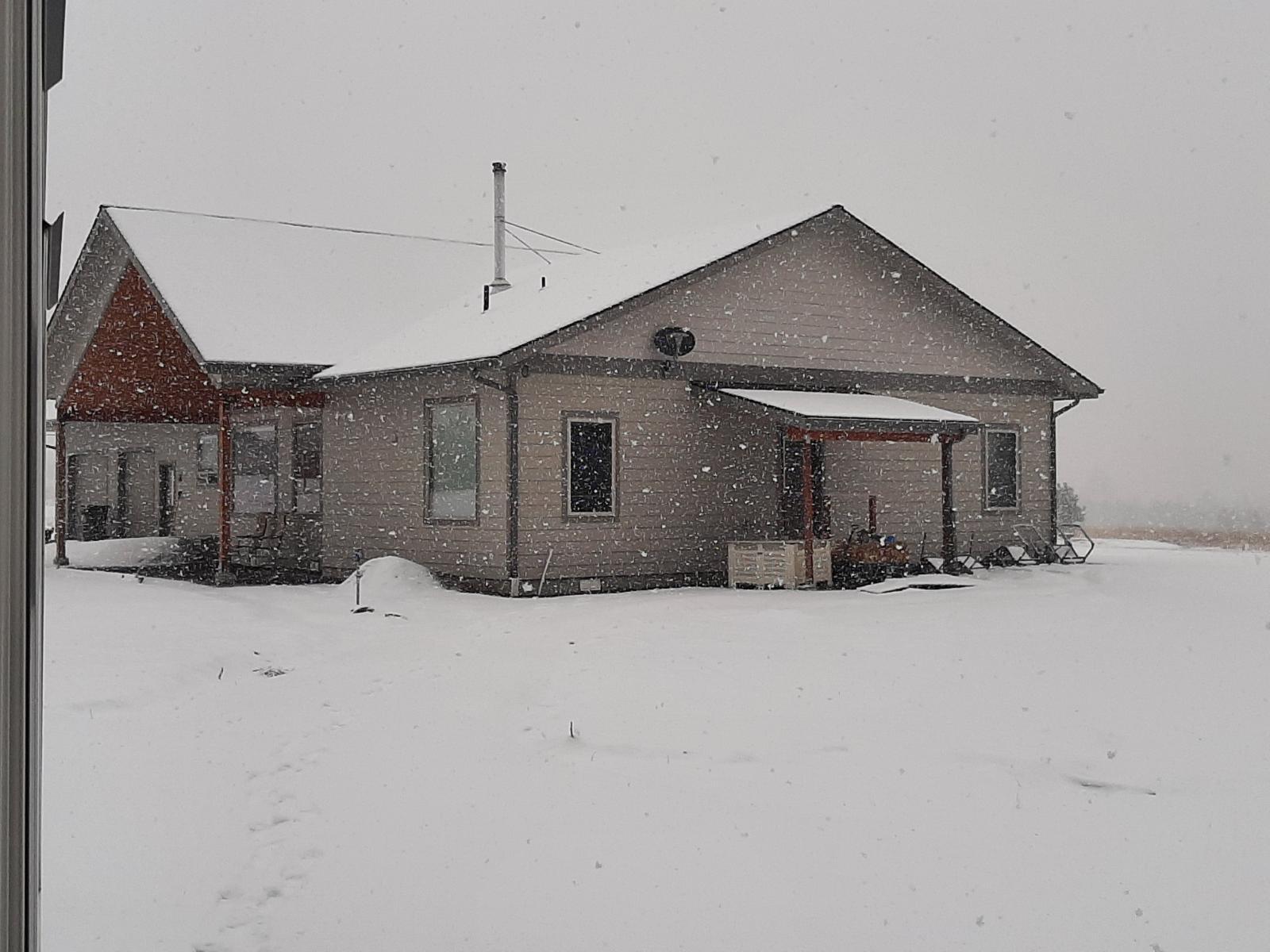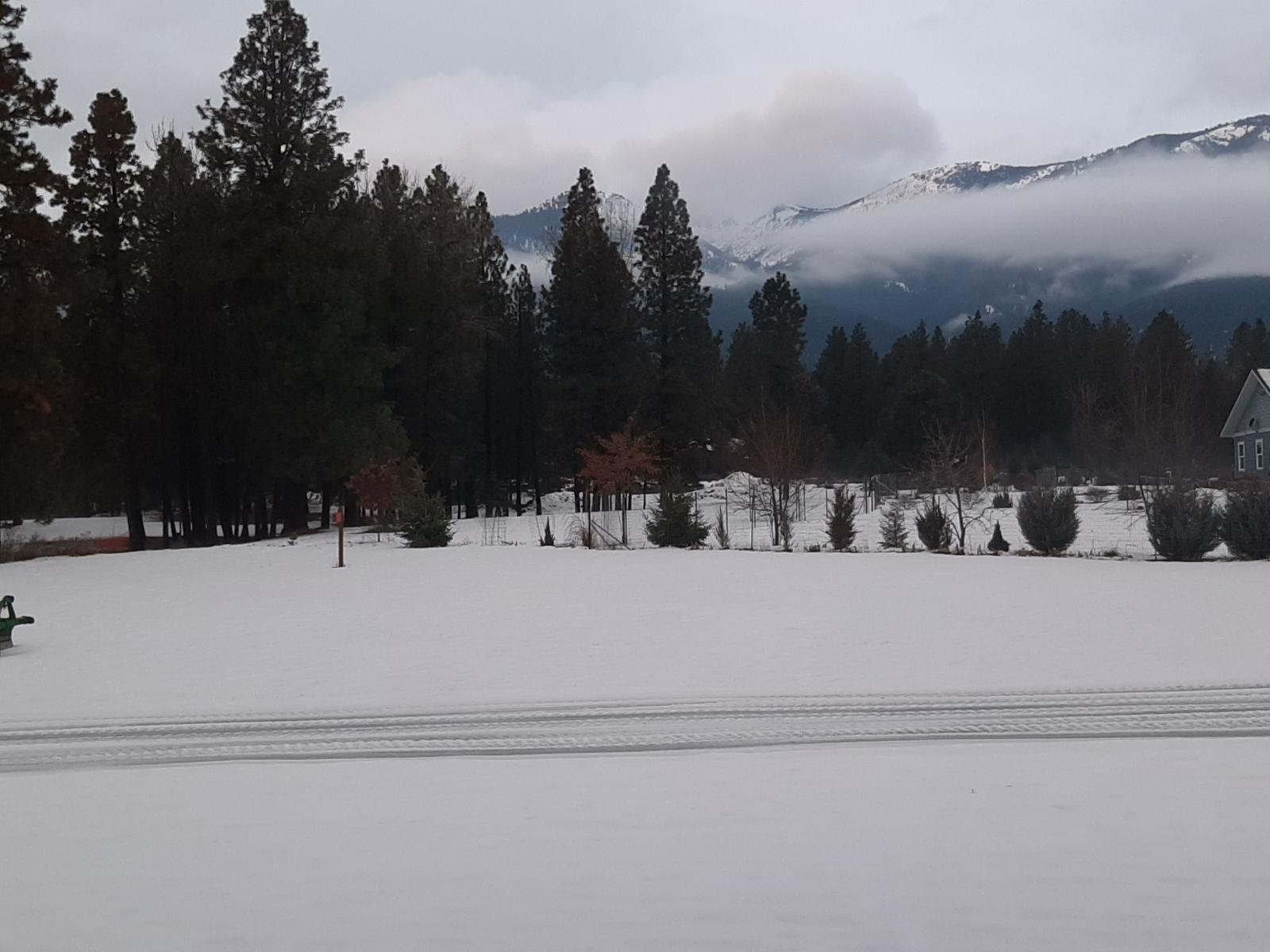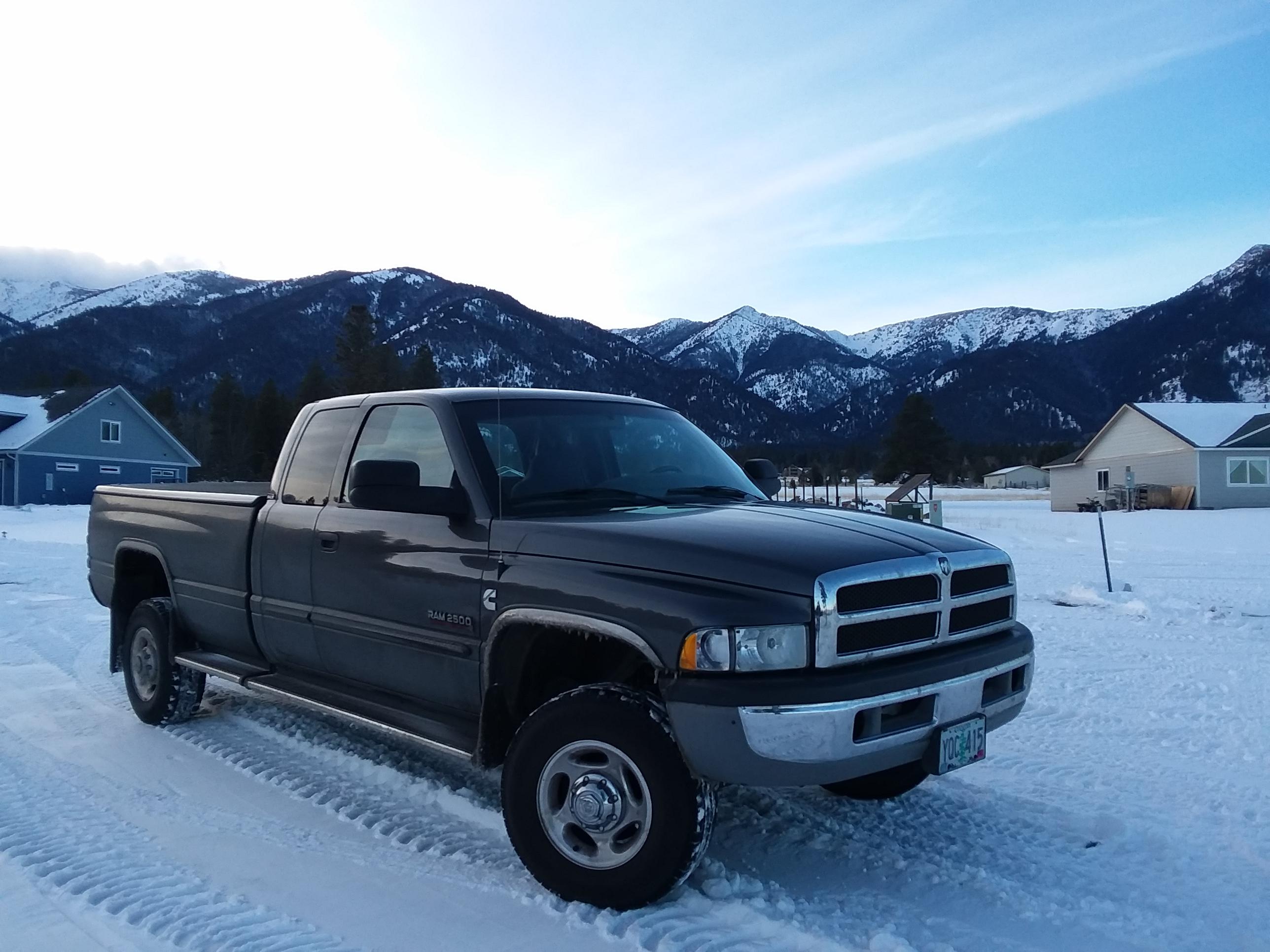
Everything posted by Tractorman
-
Truck is HORRIBLE in 2HI loose conditions
I can't offer any help regarding the transfer case, but i do have some thoughts about lack of traction in two-wheel drive. * What tire pressure are you running in the rear tires (looks like a dually according to your avatar)? I would run no higher than 40 psi, maybe even less. * Throw some weight in the bed over the rear axle. (500-700 lbs). I carry a 600 lb pallet of pavers during the winter month just for that reason. It works very well for traction, even in two-wheel drive with an open differential. * What material is the clutch made from? organic, ceramic, etc? Organic will have the smoothest engagement Ceramic encourages axle wrap. * What is the condition of your rear shocks? The rear shocks are mounted at an angle on the rear axle to help with forward / reverse torsional stability when putting power to the wheels or engaging the clutch. * Do you engage the clutch without throttle? As you know, these engine have lots of clutch engagement torque. No throttle should be applied until the clutch is fully engaged. Any or all of the above mentioned items can contribute to wheel hop / axle wrap and / or traction loss. - John
-
I know this is sudden but...
You need stop sharing useless facts! Now! We have no use for useless facts! In case you haven't heard, we are in a global warming trend. This has to be the warmest winter ever! It just has to be! For everyone! Everywhere! Oh no! I just found out it's supposed to snow tonight - that's going to wreck everything. - John
-
NV450 5speed blew at 184k miles.
That's a nicely detailed list. You have to feel good completing that job. That transmission and clutch combination will be enjoyable to drive and should take you lots of places trouble free. - John
-
Tuning Assistance
@dlg , you bring up a lot of good points and I completely understand your frustration. A stock 47RE is not a good transmission to have behind a Cummins 5.9 liter engine. You have listed all of the shortcomings of this application very well. Well, you may or may not, but I am going say probably not. The Cummins engine develops peak torque at about 1600 rpm. It maintains close to peak torque even above 2,000 rpm. If the truck loses road speed in 4th gear locked up climbing a grade, this means that the load has exceeded the full torque capability of the engine. If the converter did unlock you would have the slight benefit of a simulated partial downshift that would provide slightly more torque to the rear wheels, but that added torque would be cancelled immediately by the power loss from heat generation of a slipping torque converter. This means less power to the rear wheels. And, this excessive heat will be damaging to the transmission. So, when your transmission downshifts to 3rd, you have much more torque multiplication to the rear wheels and when the converter locks you will now even have more torque to the rear wheels. The truck will accelerate easily. Another downside to the overdrive gear (4th) on the 47RE is that the gear is too tall. The overdrive gear in the manual 5 and 6 spd transmission is not nearly as tall, thus better aligned with the Cummins engine torque for better performance. No, because the converter will immediately lock up and all of the engine torque will go to the rear wheels Yes. but not as much heat for the same grade. You will have much more available torque because of torque multiplication from the gears as you shift to lower gears. So, not a much engine power is needed. Hopefully that wasn't really a 45 degree hill. That would be 100% grade. A 10% or 15% grade is very steep. Regardless, yes, you would be making lots of heat. It really is not okay, but that is the product you have (the 47RE) and you can't really do anything about that particular situation. The transmission cannot be locked during a shift. If it was locked, the shift would be jarring and damage to the transmission would likely occur. It would be like speed shifting a manual transmission. Most people who have used this transmission for towing have significantly upgraded the transmission - mainly a lower stall speed heavy duty triple disc torque converter (converter lock up clutch), higher line pressure, heavier clutch packs, and converter lockup available in every forward gear. These amenities allow for the use of an engine tuner that will provide the needed engine torque to easily climb grades in fourth gear locked up. Both the engine and transmission will be happy. - John
-
Tuning Assistance
When would it be hugely beneficial to be not locked up in 4th? An unlocked converter generates heat, lots of heat - the heavier the load and the further the throttle is pressed, the more heat will be generated. When the converter is locked, all of the engine power is transmitted to the rear wheels (just like a in a manual transmission), thus generating far less heat and putting much more power to the wheels. To me the "bad design" is there really should have never been only four gears place behind a high torque at low rpm diesel engine in the first place. And even worse, only the two top gears allow converter lock up. Simply not enough gears (or converter lock up) to keep the engine in the peak torque range. This is why I drive a 6 spd manual transmission - always the right gear available and no slippage, no matter how demanding the load is. Gears one through three are shifted hydraulically. Fourth gear is shifted electrically with a solenoid. Converter lock up will happen only in third or fourth gear. If there is a full gear shift happening, there will be a significant engine rpm change. If the converter is locking and unlocking, there will about 100-200 rpm change under light throttle. See if you can determine which is happening. Sounds to me like a converter unlocking and locking under a steady throttle - and you are right, that should not be happening. The PCM supplies the signal for converter lock up. When unwanted converter unlocking and locking occurs, it is usually an electrical field interference generated from another electrical source. The PCM stores this unwanted information until it determines that is normal and then changes the signal to adapt to the new normal. One thing to try. Disconnect the ground at both batteries. Turn the ignition switch to "run" position. Slowly depress the throttle to the floor and slowly let it return. Do this two or three times. Hookup the batteries and drive the truck. Did the problem disappear? If so, this confirms that you are having an electrical interference with the torque converter lock up signal. The symptoms will return. - John
-
Tuning Assistance
This is normal operation. This is also normal operation. If the transmission is in fourth gear, pressing the Overdrive button "off" is commanding the transmission to downshift to third. There is no "switch" to unlock the converter. At what speed and which gears? Or is the converter locking and unlocking instead? - John
-
Merry Christmas everyone!
-
HELP Power Loss When....?.....
Your description of the engine power loss indicates the engine is going into "limp mode". The ECM will reduce fueling to a specific level when certain parameters are not met. If you are getting codes pointing to the VP44, this could be the cause of triggering the limp mode. What are all of the codes you are showing? These DTC's are important as they are a good source of information to help diagnose whatever is going on. This could be normal. The engine will not produce much heat while in the limp mode. I drove my truck for one year (over 20,000 miles) with a P0216 code (timing issue) that would force the engine into limp mode on a regular basis. I just learned how to drive the truck to avoid the limp mode until I replaced the VP44. - John
-
Air leak Hard start in the morning.
One thing you can do in the interim is to park the truck on a fairly steep incline overnight (nose pointing downhill) and see how the engine starts in the morning. Make sure the fuel tank is at least half full. If it starts easily, I would suspect a leak somewhere between the tank and the injection pump inlet. You may get some differing opinions here, but I don't think this is the source of your problem. Is it possible that you are having a problem with the fuel shutoff solenoid? - John
-
Merry Christmas everyone!
-
Help
What are the actual symptoms that initially brought it to your attention that something was wrong? Was the engine running poorly? Did the engine just not start one day? What happened? Those details may be helpful. Here is a wiring diagram from a 2006 FSM for the injectors. You may already have this diagram, but if not, maybe it will help. The four DTC's you are getting indicate a poor electrical connection somewhere in the circuit. - John
-
Help
A couple of questions. The DTC's listed below (which include the ones you listed) are for open circuits for injectors 1-6. What do you mean when you say, "when I turn on the key injector one and injector number five start pulsing …if I try to start, the engine, turns over and the pulsing goes to injector two and six until I turn the key switch off"? An open circuit would mean that no electrical current could flow to fire an injector, which in turn would mean that injector would not fire. I am assuming the engine does not start and run. Is this correct? P0201 FUEL INJECTOR 1 CIRCUIT/OPEN P0202 FUEL INJECTOR 2 CIRCUIT/OPEN P0203 FUEL INJECTOR 3 CIRCUIT/OPEN P0204 FUEL INJECTOR 4 CIRCUIT/OPEN P0205 FUEL INJECTOR 5 CIRCUIT/OPEN P0206 FUEL INJECTOR 6 CIRCUIT/OPEN Listed below are possible causes and testing procedures for an open injector circuit, which includes all wiring from the ECM to the injector coil. · P0205 INJECTOR #5 CONTROL CIRCUIT NOTE: All symptoms listed above are diagnosed using the same tests. The title for the tests will be P0205-INJECTOR #5 CONTROL CIRCUIT. When Monitored and Set Condition: When Monitored: While the engine is running. Set Condition: When the injector current falls below a calibrated threshold. POSSIBLE CAUSES PASS TROUGH CONNECTORS OPEN FUEL INJECTOR INJECTOR HARNESS OPEN HIGH SIDE DRIVER HARNESS OPEN LOW SIDE DRIVER HARNESS OPEN ECM DIAGNOSTIC PROCEDURE NOTE: Refer to VERIFICATION TESTS for appropriate verification test procedures. 1. With the DRBIII®, read DTCs. Are all 6 of the injector DTCs (P0201 - P0206) present? Yes --> Go To 2 No --> Go To 3 2. Inspect wiring harness for signs of multiple open circuits between the ECM and the injector pass through connectors. Inspect the wiring harness between the pass through connectors to the injectors. Are there open circuits in the wiring harness? Yes --> Repair or replace the open connectors or wiring. No --> Go To 3 3. Turn the ignition off. Disconnect the pigtail nuts from the suspect injector. Using an Ohmmeter, measure the resistance between the solenoid posts of the injector. NOTE: Be sure to zero the ohm meter prior to checking the injector circuit. Is the resistance less than 1 ohm and greater than 0 ohms? Yes --> Go To 4 No --> Replace the fuel injector. 4. Connect the pigtail nuts for the suspect injector. Disconnect the injector harness connector for the suspect injector. Measure the resistance of the injector harness circuit between the high side driver circuit and the low side driver circuit for the suspect injector at the injector harness connector. NOTE: Be sure to zero the ohm meter prior to checking the injector circuit. Is the resistance less than 1 ohm and greater than 0 ohms? Yes --> Go To 5 No --> Replace or repair the injector harness. 5. Disconnect the ECM harness connectors. Disconnect the Injector harness connector. Check connectors - Clean/repair as necessary. Measure the resistance of the Bank 1 high side driver circuit between the ECM connector and the injector harness connector. Is the resistance less than 10 Ohms? Yes --> Go To 6 No --> Replace or repair the open engine harness. 6. Measure the resistance of the Bank 1 low side driver circuit between the ECM connector and the injector harness connector. Is the resistance less than 10 Ohms? Yes --> Test Complete. No --> Replace or repair the open engine harness. - John
-
Tuning Assistance
I have never used an Autel scan tool, so I don't know the answer, but I highly doubt that any of the scan tools will have the ability to enable the high idle / 3 cyl idle feature. The banjo fitting in the photo below should be the fitting you are looking for. All that has been added in the 1/8" NPT threaded port in the end of the bolt. You will find the banjo bolt that you need to replace is fitted at the inlet of the VP44 injection pump. - John
-
Tuning Assistance
You did say in your first post that you thought everything was stock, but you didn't mention whether the transmission was an auto or manual. This is important because the overdrive gear ratio in an auto transmission is .69:1, a much taller gear than that of an overdrive gear in a manual transmission. I deduced that it was an automatic because you mentioned that, "overdrive kicks in around 45-50 mph". Also, knowing the specific tire size and the specific axle ratio is very helpful. The tire size on your truck is the best match for the axle ratio and automatic transmission in your truck to get the best performance from the engine in your truck. I will try to answer some of the questions you asked, but didn't get answered. Finding a reputable shop can be difficult. Finding a reputable shop that knows and understands VP44 engines can even be more difficult, but that is what I would search for. A dealer or a shop with specialized tools may be able to help you with the enabling of the high idle and 3 cylinder idle. I have this feature enabled because I have a Smarty S03 tuner. It may be possible (not sure about this) that if you can find someone with the Smarty S03 who is willing to connect to your diagnostic port and lock in the VIN# one time, the feature may be enabled. Again, not sure about this. @Mopar1973Man, can you answer this question? Do you already have a fuel pressure gauge on your truck? If not, this would be a good option. It is important to ensure that there is always a positive pressure (lift pump pressure) at the inlet of the VP44 fuel injection pump (a specific value is not important). First, let me make it clear that I have no experience with the Quadzilla tuner, but I do have experience with tuning a VP44 engine. From what I understand about the Quadzilla, is that you have a lot of control when setting fueling and timing parameters for varying engine rpms and throttle positions. It seems to me that you are having limited fueling in the 1500 - 2000 rpm range. If you are in overdrive and the torque converter is locked, are you getting any black smoke from the tailpipe when accelerating hard at 1500 rpm? If the tailpipe is clear, I would start adding fuel in this rpm range. I also understand that the Quadzilla is one of the tuners that is more difficult to understand how to set the desirable parameters with fueling and timing. I am using a Smarty S03 tuner with a manual 6 spd transmission. I have it set to start fueling hard from about 1300 rpm, so by 1500 rpm the engine is delivering a lot of torque (without smoke). I am doing this with stock timing. I would be more concerned about the stock transmission than the engine. The lockup converter clutch is a weak link, especially at lower engine rpms under high engine torque. @dlgasked, "On to the tuning questions. I would rather pay someone experienced to help me with this, rather than try to figure it out myself and mess something up." @Mopar1973Man, can you build him a tune? - John
-
PCM role
How many miles on your truck? - John
-
Tuning Assistance
@Mopar1973Manwill likely reply at some point, but I know he will want a bit more information. He is the residential expert regarding the Quadzilla. He can provide you a custom tune. Automatic transmission (sound like an automatic from you post)? What is your tire size? What is your axle ratio? Still have stock injectors and turbo? - John
-
2013 Ram trouble codes
@01_Cummins_4x4, hopefully you will let us know what the final fix is. - John
-
2nd Gen Cummins heater temp differences between trucks
A couple of things going on here that are not frequently talked about. In the rear doors of the quad cab there air passageways in the lower rearward part of the doors. Each door has an airflow entrance and an exit. The entrance is exposed to the inside of the cab when all of the doors are closed. The exit is exposed to the outside area beyond the door seal when all of the doors are closed. You will have to open the rear door to view the exit. I believe (but have not proven) that there is a membrane inside the rear door vent that acts as a check valve allowing air to only flow outward. So, anytime the outside air is selected, the air will flow from the outside cowling behind the engine hood through the blower fan into the cab and then finally through rear door exits. This long flow path somewhat restricts the airflow. Air flow will improve at faster vehicle speeds as a result of the difference of air pressure - higher at the inlet (cowling behind hood) and lower at the outlet (rear doors of the cab). The difference of pressure has a venturi effect. When Recirc is selected, the re-circulation door near the inlet of the blower fan closes off outside air and opens a path directly from the inside of the cab to the blower fan inlet. This short path offers much less restriction to airflow, consequently more air comes out of the vents. Also, the air re-entering the blower fan will be much, much warmer than if outside air was selected, especially if outside temperature is well below freezing. The part you mention about, "my blower motor spins much harder and faster" is probably not true. It may SOUND like it is spinning faster, but what you are hearing is lots of blower fan noise and more air movement because the re-circulation door is open to the inside of the cab (where your ears are). Something in general about non-positive displacement fans that move air - the least restricted air path will load the fan the heaviest (slower rpm's, more air flow) - the most restricted air path will load the fan the lightest (higher rpm's, less air flow). This is contradictory to what most people believe. Listen to a vacuum cleaner motor when the suction hose is blocked - air flow is virtually stopped, but the motor speeds up. On very cold mornings (well below freezing) I use the Recirc mode to warm up the cab faster. I switch to outside air when I start driving. - John
-
68RFE Column to Console Shifter Conversion
Why make the conversion from steering column shifter to console shifter? Good question. The only two trucks that I have driven with a 68RFE 6spd automatic transmission are a Cummins powered 2011 Ram 2500 and a 2018 Cummins powered Ram 2500. Both were driven hauling a gross combined weight of over 20,000 lbs each. Both trucks were quite capable. My experience with the 2018 truck was in the summer of 2021. However, my focus will be with the most recent trips (August and October of 2023) in which I was driving the 2011 truck. The 2011 Cummins powered Ram 2500 is owned by my neighbor Jim. He is the original owner. Until this time, he has never hauled heavy loads with his truck. The first trip with Jim’s truck was an emergency trip. My receiver hitch on my 2001 2500 truck separated from the frame, while cresting the top of a 5,000 ft mountain pass about 50 miles from home. The GCW was 20,500 lbs. I called Jim and we brought his truck to the rescue. After getting the trailer hooked up to Jim’s truck, Jim activated the Tow-Haul mode and the exhaust brake. We began the 6% grade descent (me behind the wheel) needing to slow for many 40 mph, 35 mph and 30 mph curves. Our first impression was that the exhaust brake and transmission downshifting was too aggressive for our taste in the Tow-Haul mode. The downshifting and braking were effective, just too aggressive. We still had one more 5,000 ft mountain to climb and descend. I suggested that we start climbing the next pass with Tow-Haul mode engaged and then about halfway up the pass, turn off the Tow-Haul mode and manually select the specific gear limit on the transmission. So, as we began climbing the next pass in Tow-Haul mode, unwanted downshifts and some unwanted upshifts began to occur. The downshifts were an abrupt event, and some of the upshifts were accompanied with over-revving. We turned off the Tow-Haul feature for the rest of the trip and manually selected the gear limit when needed by using the -/+ switch on the column shifter. It turned out to be a much better experience. The unwanted shifting ceased and when the shifts were manually made (using throttle control for the shift) the shift was smooth - whether shifting up or down. The descent was made without using the service brakes. Throttle control was used for engaging and disengaging the exhaust brake. We were both impressed with how the transmission and exhaust brake performed using -/+ switch on the column shifter. We finished the rest of the trip through a twisty road with lots of curves using the -/+ switch when necessary. During this part of the trip, we started talking about the awkwardness of reaching for the switch on the column shifter (forcing the eyes to leave the road) and having to avert the eyes to the dash to see if the action actually happened. One of the comments made by one of us was, “Wouldn’t it be nice to have a console shifter with a -/+ toggle right where you rest your hand.” After some research we found that the conversion had already been done by others - and, it was done with OEM parts. Who would have guessed? Before making the conversion, I wrote down what Jim and I thought the pros and cons would be regarding the conversion. Later, after the conversion was complete, we found what is listed below to be true: Pros – * Shifter is located much closer to hand for ease of operation. * Once “Drive” is selected, the right hand could rest on the shifter handle and momentarily toggle the shifter left or right (-/+) for downshifts or upshifts respectively to select maximum gear limit. This would be the most important and impressive improvement. Because the shifter handle’s right and left distance movement is short and has a positive mechanical stop, we felt there would be no doubt that the shift was made. * Eyes would stay on road during shifts * Shift timing and throttle control would be precise for smooth upshifts/downshifts * On icy / snowpacked road driving, the transmission could be easily bumped into “Neutral” from “Drive” if needed when coming to a stop. Cons – * Slightly less console storage area (a very minor sacrifice) * The middle front seat would be sacrificed with certain truck models Here are some photos of the conversion after completion. Note the -/+ symbol below the letter "D" in the photo below. When drive is selected, the shifter can simply be toggled left or right to select a different gear. The shifter is spring loaded to return to center. In the photo below, note how comfortably Jim's hand rests on the shifter when "Drive" is selected. To my knowledge, there are no 2500 and 3500 Cummins powered trucks that come with the 68RFE transmission console shifter (could be wrong here). However, gas powered trucks during those years that came with the 66RFE had console shifters. The basic difference between the 66RFE and a 68RFE is the strength of the transmission (note the second digit). Because the two transmissions are basically the same, all of the shift controls, wiring harness, shifter, and console for a column to console conversion can be purchased and installed with no cutting or drilling. While we certainly weren’t the first to do this conversion, I could not find any detailed information regarding the real benefits for doing this conversion. We had to figure that part out for ourselves. The console shifter does not do anything that the column shifter can’t do; it’s just that the console shifter does it more efficiently, and much more intuitively. Precise shift timing matched with throttle control makes for smooth shifting. Jim now drives his truck as a daily driver much differently than he did before the conversion. When he drives to town and back (about a 25 mile round trip), he now uses the shifter many times in the manual mode slowing for curves at highway speeds, thus maximizing the use of the exhaust brake and minimizing the use of the service brakes. He is a happy camper. - John
-
2013 Ram trouble codes
He can purchase a City Diesel actuator. It does not need to be calibrated. He can purchase the actuator from Geno's Garage. It explains in detail what to check for on the turbocharger to help evaluate whether or not an actuator replacement will fix the issue. - John
-
truck failed it's MOT test today
I also think the front brakes on trucks that haul heavy loads with automatic transmissions have a big impact on heat generation conducted from the rotor to the hub. Excessive heat will harden the seal that is protecting the front bearing and cause premature failure of the seal. The bearings will suffer after that. I replaced my front hub bearings for the first time at 374,000 miles. Of course, I have a 6 speed manual transmission and an exhaust brake which is used all of the time. I am sure this contributed to the longevity of the front hub bearings. - John
-
NV450 5speed blew at 184k miles.
Your explanation along with the photo is clear. I am glad that you figured it out. You will be in a much better frame of mind when it comes time for the repair. - John
-
NV450 5speed blew at 184k miles.
I can only imagine how you feel. I am sure you have thought a lot about what could be causing this - any ideas at this point? Any possibility that it could be something external (just being hopeful)? Does the shifter feel like it is making its full travel going into first gear? - John
-
truck failed it's MOT test today
I guess perseverance pays off. Good job! Let us know how the truck handles with the new ball joints - should be much better. - John
-
MoparMan, Where's the pictures of the snow...
Since he wouldn't send you any pictures of the snow - I will. The first photo is from Sunday, December 3rd. The second photo is this morning.


